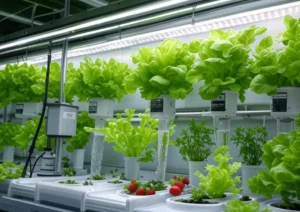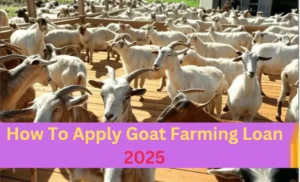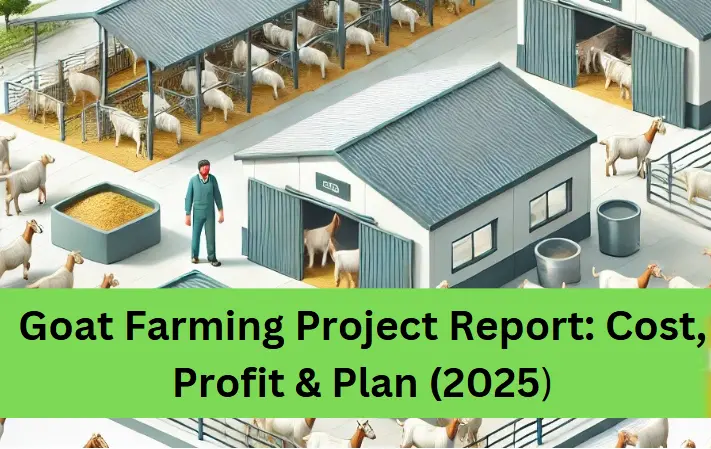
If you’re searching for a low-investment, high-return agribusiness, goat farming is a golden opportunity. With rising global demand for goat meat (chevon), milk, and fibre, this industry is booming. In India alone, according to the goat farming project report 2025, the goat farming market is projected to grow at a 4.5% CAGR by 2027, driven by health-conscious consumers and export opportunities. Goat farming is a fast-growing livestock business in India that is a sustainable and high-profit option for farmers, agripreneurs and investors. According to data from the Indian Council of Agricultural Research (ICAR), the goat population in India is more than 148 million (Source: ICAR Report, 2023), which shows how strong the market potential of this industry is.
This goat farming project report isn’t just a guide—it’s your blueprint for launching a sustainable, systematic, profitable venture. Whether you’re a beginner or an experienced farmer, we’ll break down everything from breed selection to profit calculations, backed by real-life success stories and actionable strategies. Let’s dive in!
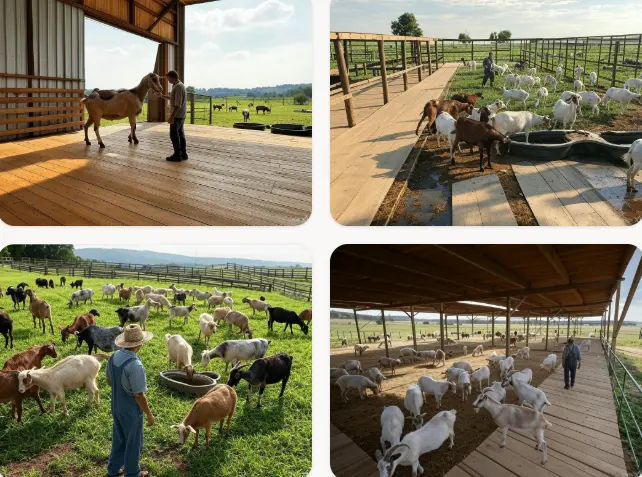
Before understanding the goat farming project report, we have to understand the importance, benefits, business potential etc. of goat farming. Here the importance of goat farming has been explained easily.
1. Market Demand for Goat Farming in India
📌 The Mutton Industry is worth ₹30,000 Cr+. Goat meat (mutton) is one of the most consumed meats in India, and the demand increases by 8-10% every year (Source: Ministry of Animal Husbandry, India, 2023).
📌 High Reproduction Rate – A healthy goat gives birth to 2 babies in a year, which helps in fast herd growth.
📌 Low Maintenance & High Adaptability – Goats can survive in all types of climatic conditions, which makes this business more profitable.
📌 NABARD and Govt. Subsidy Support – NABARD (National Bank for Agriculture and Rural Development) and State Governments provide subsidies and loans for goat farming.
Goat farming is a fast growing agribusiness in India, known for its low investment and high profitability. According to icar.org.in and NABARD reports, farmers can increase their income by 2-3X through scientific goat farming. If you are interested in livestock farming, then goat farming can be a smart business choice.
1️⃣ Low Investment & High Returns
The starting cost in goat farming is relatively low, and the profit margins are high. Both initial investment and risk are reduced with the subsidy of NABARD and State Govt.
📌 Reference: NABARD Model Scheme on Goat Farming
2️⃣ High Demand for Goat Meat (Mutton)
Goat meat (mutton) is in great demand in the Indian and international markets. Its price is higher than chicken and beef, and it is considered a healthy protein source.
📌 Reference: Goat Farming Cost & Profit Guide
3️⃣ Multi-Purpose Income Sources
Goat farming is beneficial not only for meat but also for milk, manure, fiber and breeding business:
- ✅ Goat Milk – High in nutrition, market demand is steadily increasing.
- ✅ Goat Manure – Used in organic farming and biogas plants.
- ✅ Breeding Business – There is always a demand for high-quality breeds.
📌 Reference: ICAR-CIARI Goat Farming Guide
Steps to Creating a Goat Farming Business Plan(goat farming project report)
Now you must have understood that goat farming can be a good business plan that can give high returns that too at a very low cost. Now let’s move forward towards a profitable business and learn how to create a successful goat farming project report. and precision agriculture help to grow your goat farming learn more about precision farming please click here
Step 1 – Define Your Farming Model
Before creating your goat farming project report, it’s essential to define your farming model based on your goals and resources. Here are the three main types of goat farming:
* Meat Production:
If your primary goal is to produce meat, focus on fast-growing breeds like Boer or Sirohi. These breeds are known for their high meat yield and are in high demand in both domestic and international markets.
* Dairy Farming:
If you’re interested in milk production, opt for high-milk-yield breeds like Saanen or Jamunapari. These breeds can produce up to 3–4 liters of milk per day, making them ideal for dairy farming.
* Dual-Purpose:
If you want to diversify your income streams, consider dual-purpose breeds like Beetal or Osmanabadi. These breeds are suitable for both meat and milk production.
Step -2 Land & Infrastructure Setup
Land selection is a very important factor in these steps of making a goat farming project report. Because land and infrastructure decide the size of our farm, the number of goats etc.
Land Requirements:
Goats require relatively little space compared to other livestock. One acre of land can comfortably accommodate 40–50 goats. Ensure the land has proper drainage and access to clean water.
Shelter Design:
Goats need a well-ventilated, dry, and clean shelter to thrive. Here are some key considerations for designing your goat shed:
Flooring: Use elevated concrete floors to prevent dampness and keep the goats dry.
Ventilation: Install windows or grills to ensure proper airflow and prevent respiratory issues.
Fencing: Use wire mesh or thorn bushes to create a secure perimeter and protect your goats from predators.
🐐 Land Requirement for Goats Based on Breed and Age
Goat Breed | Shelter Area (sq. ft.) | Total Land Requirement (sq. meter) |
Alpine | 12-15 | 60-75 |
Beetal | 15-18 | 75-90 |
Barbari | 10-12 | 50-65 |
Jamunapari | 18-20 | 90-100 |
Sirohi | 12-15 | 65-75 |
Step 3 – Selecting the Right Breeds
After land selection, in the next step in this guide to goat farming project report, we have to select the best breed according to our. Here’s a detailed look at some of the best breeds for meat, milk, and fibre production:
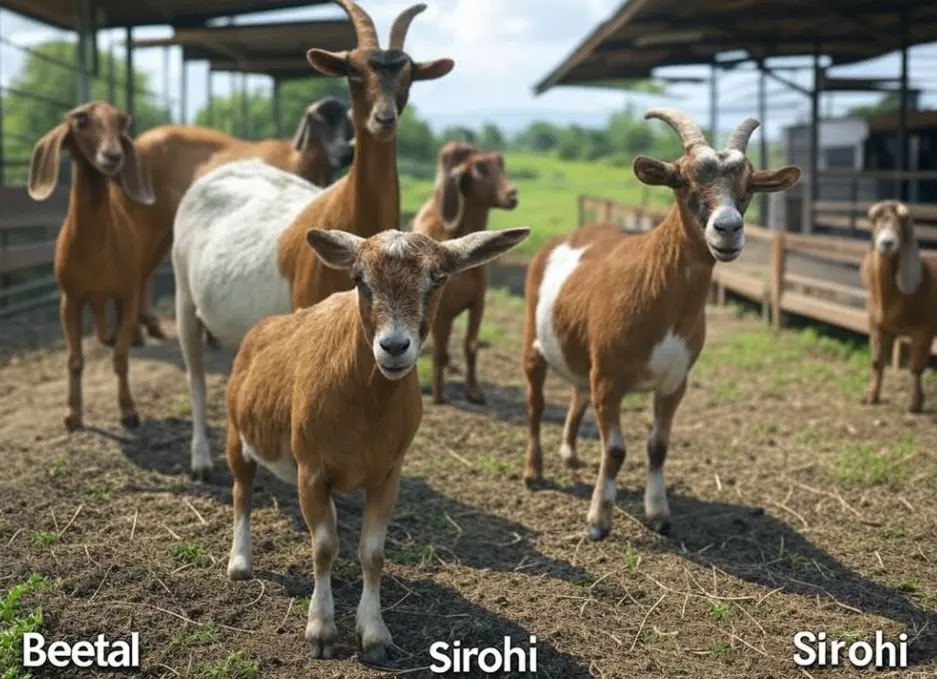
Breed | Key Features | Best Location (States in India) |
1.Jamunapari | Large size, high milk yield, fast growth, long ears | Uttar Pradesh, Madhya Pradesh, Rajasthan |
2.Beetal | High milk yield, adaptable to stall feeding, good meat quality | Punjab, Haryana, Uttar Pradesh |
3.Sirohi | Hardy, good meat production, low maintenance | Rajasthan, Gujarat, Madhya Pradesh |
4.Barbari | Small size, high fertility, dual-purpose (meat & milk) | Uttar Pradesh, Haryana, Punjab |
5.Osmanabadi | Disease-resistant, good meat and milk producer | Maharashtra, Karnataka, Telangana |
6.Malabari | High fertility, fast growth, dual-purpose | Kerala, Tamil Nadu, Karnataka |
7. Black Bengal | Small size, excellent meat quality, highly fertile | West Bengal, Bihar, Odisha, Jharkhand |
8.Sojat | Large size, fast-growing, best for meat production | Rajasthan, Gujarat, Madhya Pradesh |
9.Gujri | Medium size, strong immunity, good meat production | Gujarat, Rajasthan, Maharashtra |
10.Surti | High milk yield, small-medium size, adaptable to stall feeding | Gujarat, Rajasthan, Maharashtra |
Goat Farming Project Report Cost & Profit Analysis
Goat Farming Project report Cost analysis for 20 goats
Before starting the Goat Farming Project Report a goat farming business requires careful financial planning. Here’s a breakdown of the initial investment for a small-scale farm with 20 goats:
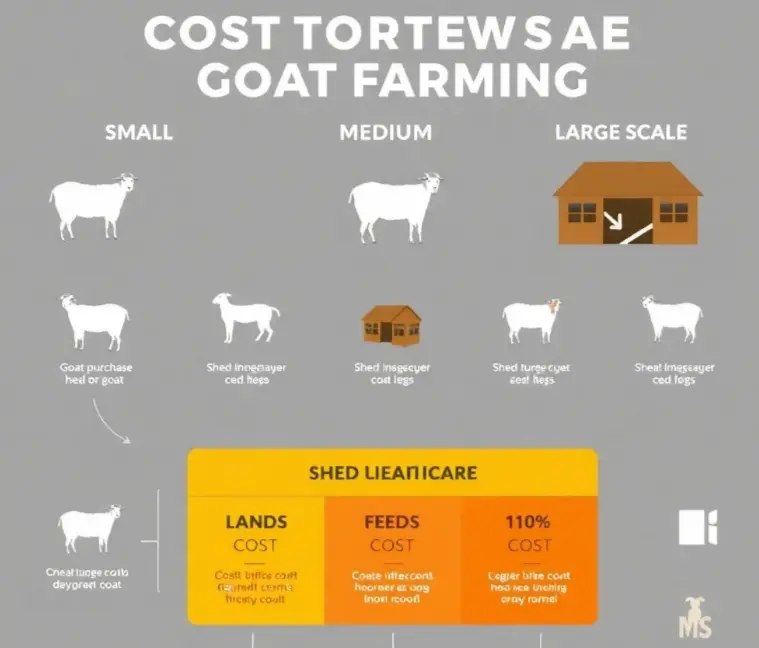
Expense/Income | Amount (INR) |
Goat Purchase (Avg. ₹6,000 per goat) | ₹1,20,000 |
Male Goats (2 @ ₹8,000 each) | ₹16,000 |
Shed Construction | ₹40,000 |
Feed Cost (Annual) | ₹80,000 |
Vaccination & Medicine | ₹10,000 |
Labour Cost (If any) | ₹30,000 |
Miscellaneous Expenses | ₹10,000 |
Total Investment | ₹3,06,000 |
Starting a goat farming business requires careful financial Goat Farming Project Report planning. Here’s a breakdown of the initial investment for a medium-scale farm with 50 goats:
Expense/Income | Amount (INR) |
Goat Purchase (Avg. ₹6,000 per goat) | ₹3,00,000 |
Male Goats (5 @ ₹8,000 each) | ₹40,000 |
Shed Construction | ₹1,00,000 |
Feed Cost (Annual) | ₹2,00,000 |
Vaccination & Medicine | ₹70,000 |
Miscellaneous Expenses | ₹20,000 |
Total Investment | ₹7,55,000 |
So this is the cost analysis for the goat farming project report in which we have calculated the total cost of 20, 50, and 100 goats for 1 year. Now next we will calculate the profit of goat farming for 1 year. and precision agriculture help to grow your goat farming learn more about precision farming please click here
🐐 Profit Analysis for Goat Farming
Goat Farming Project report profit analysis for 20 goats
Income & Expenses | Amount (INR) |
Income from Goat Sales (₹10,000 per goat) | ₹2,00,000 |
Total Expenses (First Year) | ₹3,06,000 |
Profit (First Year) | ₹(-1,06,000) (Loss) |
Expected Income (Second Year with Breeding) | ₹3,50,000 - ₹4,00,000 |
Expected Profit (Second Year Onwards) | ₹1,20,000 - ₹1,50,000 |
Goat Farming Project report profit analysis for 50 goats
Income & Expenses | Amount (INR) |
Income from Goat Sales (₹10,000 per goat) | ₹5,00,000 |
Total Expenses (First Year) | ₹7,55,000 |
Profit (First Year) | ₹(-2,55,000) (Loss) |
Expected Income (Second Year with Breeding) | ₹8,00,000 - ₹9,00,000 |
Expected Profit (Second Year Onwards) | ₹3,50,000 - ₹4,50,000 |
Goat Farming Project report profit analysis for 100 goats
Income & Expenses | Amount (INR) |
Income from Goat Sales (₹10,000 per goat) | ₹10,00,000 |
Total Expenses (First Year) | ₹14,20,000 |
Profit (First Year) | ₹(-4,20,000) (Loss) |
Expected Income (Second Year with Breeding) | ₹17,00,000 - ₹18,00,000 |
Expected Profit (Second Year Onwards) | ₹7,50,000 - ₹9,00,000 |
Feeding & Nutrition: Secrets to Healthy, Productive Goats
Daily Diet Plan for Goats
Proper nutrition is key to the growth and productivity of your goats. Here’s a detailed guide to their daily diet:
Green Fodder: 4–5 kg/day (e.g., Napier grass, lucerne).
Dry Fodder: 1–2 kg/day (wheat straw, paddy husk).
Concentrates: 200–300g/day (maize, soybean, mineral mix).
Water: 4–5 litres/day (double during lactation).
Pro Tip: Add Azolla (a protein-rich fern) to boost milk yield by 15%.
Health Management – Preventing Common Goat Diseases
In this goat farming project report guide, health management is One of the most critical aspects of goat farming. Goats are susceptible to various diseases, and if not managed properly, these can lead to significant losses. In this section, we’ll dive deep into the common diseases that affect goats, their symptoms, prevention strategies, and treatment options. By the end, you’ll have a clear understanding of how to keep your goats healthy and productive.
Common Goat Diseases and Their Symptoms
1. PPR (Peste des Petits Ruminants)
Cause: Viral infection.
Symptoms:
High fever (104–106°F).
Nasal and eye discharge.
Diarrhea and dehydration.
Sores in the mouth.
Impact: Highly contagious; can cause up to 90% mortality in untreated herds.
2. Foot-and-mouth disease (FMD)
Cause: Viral infection.
Symptoms:
Blisters on the mouth, feet, and udder.
Lameness and reluctance to move.
Excessive salivation.
Impact: Reduces milk production and weight gain; can lead to secondary infections.
3. Enterotoxemia (Overeating Disease)
Cause: Bacterial infection (Clostridium perfringens).
Symptoms:
Sudden death in young goats.
Bloating and abdominal pain.
Diarrhea with blood.
Impact: Often fatal if not treated promptly.
4. Goat Pox
Cause: Viral infection.
Symptoms:
Skin lesions and scabs.
Fever and loss of appetite.
Respiratory distress.
Impact: Reduces milk and meat production; can cause mortality in severe cases.
5. Parasitic Infections (Worms, Ticks, Mites)
Cause: Internal and external parasites.
Symptoms:
Weight loss and poor growth.
Anaemia (pale gums).
Itching and hair loss.
Impact: Weakens the immune system, making goats more susceptible to other diseases.
Preventive Measures for Goat Diseases
Prevention is always better than cure right? So here are some key strategies to keep your goats healthy:
Vaccination Schedule
Vaccination is the most effective way to prevent viral and bacterial diseases. Here’s a recommended schedule:
| Disease | Vaccine | Frequency |
|---|---|---|
| PPR | PPR Vaccine | Yearly |
| Foot-and-Mouth | FMD Vaccine | Every 6 months |
| Enterotoxaemia | ET Vaccine | Bi-annual |
| Goat Pox | Goat Pox Vaccine | Yearly |
Tip: Always consult a veterinarian to tailor the vaccination schedule to your herd’s specific needs.
Deworming
internal parasites like worms can severely affect your goats’ health. Follow this deworming schedule:
Kids: Deworm every 3 months.
Adults: Deworm every 4–6 months.
Quarantine New Animals
New goats can introduce diseases to your herd. Quarantine them for at least 2–3 weeks before introducing them to the main herd.
Balanced Nutrition
Ensure your goats get:
Green Fodder: Napier grass, lucerne.
Dry Fodder: Wheat straw, paddy husk.
Concentrates: Maize, soybean, mineral mixtures.
Marketing & Selling Strategies – Where to Sell for Maximum Profit?
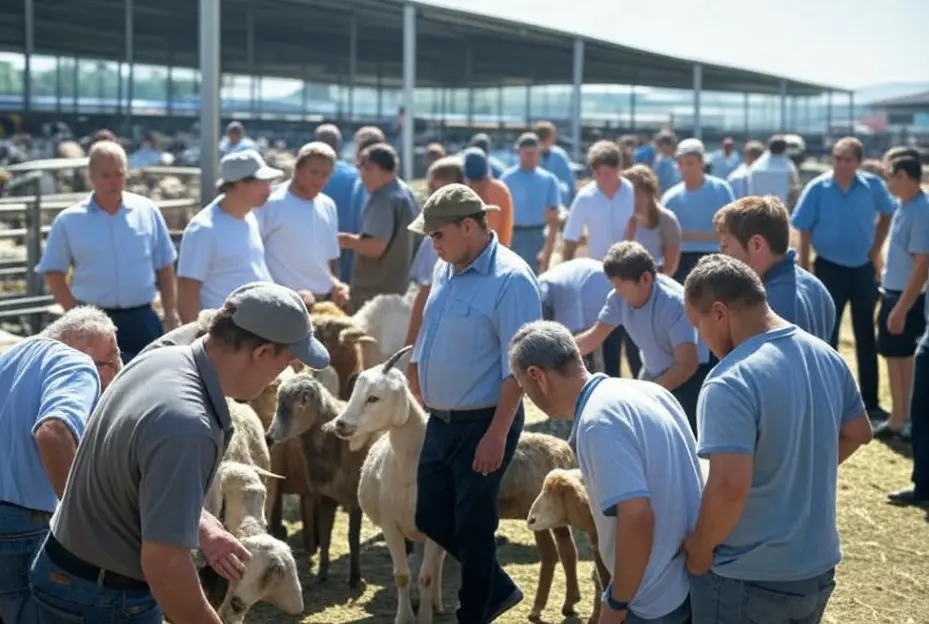
Here are some strategies:
Local Meat Markets: Sell directly to butchers or restaurants.
Dairy Cooperatives: Supply milk to brands like Amul or Mother Dairy.
Exports: Target Middle Eastern markets via APEDA-certified channels.
Social Media: Use Facebook/WhatsApp groups to connect with bulk buyers.
Case Study: Ramesh Patel from Gujarat earns ₹10 lakhs/year by exporting Boer goats to Dubai.
Government Schemes & NABARD Loan for Goat Farming
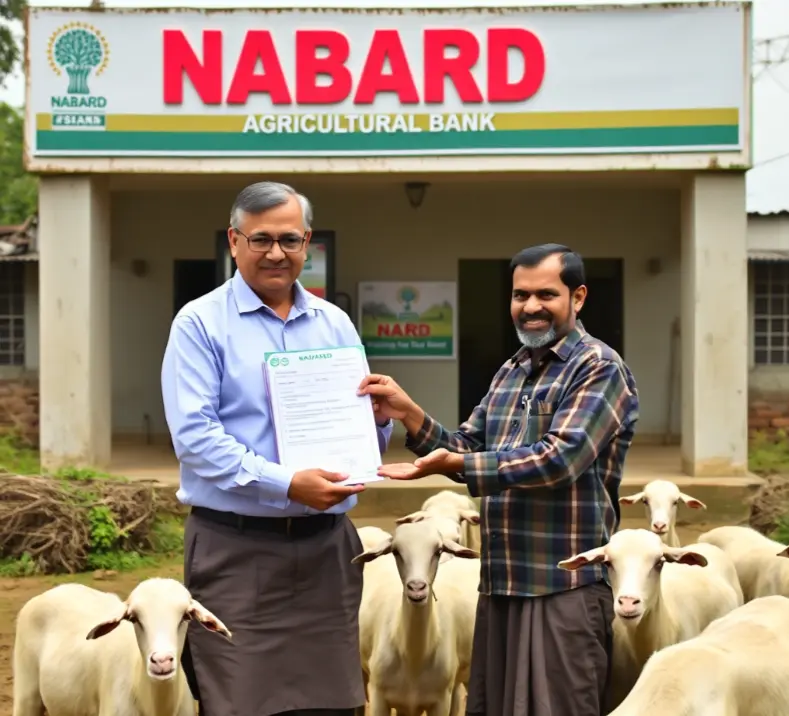
Scheme Name | Details & Benefits | Eligibility & Application |
NABARD Goat Farming Subsidy | 25-35% subsidy on loans for goat farming. 25% subsidy for the general category (Max ₹2.5 lakh). 35% subsidy for SC/ST/BPL (Max ₹3.5 lakh). | - Apply through banks(SBI, PNB, Co-operative Banks, etc.). - Must have a detailed business plan. - Loan repayment tenure:5-7 years. |
PM Formalization of Micro Food Processing Enterprises (PM FME) | 35% subsidy for individuals & FPOs for goat meat processing units. Support for branding & marketing. | - Apply at https://pmfme.mofpi.gov.in. - Priority for SC/ST,women, and small farmers. |
Rashtriya Krishi Vikas Yojana (RKVY) | Financial support for commercial goat farming. Infrastructure & technology improvement assistance. | - Farmers, SHGs, andFPOscan apply. - Application through state agriculture departments. |
Dairy Entrepreneurship Development Scheme (DEDS) | Covers goat milk farming units. 25% subsidy (₹1.2 lakh) for general category. 33% subsidy (₹1.6 lakh) for SC/ST. | - Apply through NABARD & Banks. - Requires a business proposal. |
Animal Husbandry Infrastructure Development Fund (AHIDF) | Loan & subsidy for large-scale goat farming & meat processing units. Interest subvention (3%) for 10 years. | - Apply via https://ahidf.udyamimitra.in/. - For FPOs, Co-operatives, MSMEs. |
State-Level Goat Farming Subsidies | Various state governments offer 40-60% subsidies for goat farming. Popular in Rajasthan, Maharashtra, Uttar Pradesh, and Tamil Nadu. | - Apply through respective state animal husbandry departments. - Visit local veterinary offices for details. |
🐐 Goat Farming Project Report 2025 New Updates
1. Goat Farming Now Eligible Under ‘Startup India’ Initiative
Yes, it’s true! In 2025, you can register your goat farming business under the Startup India scheme. That means you’re eligible for mentorship, startup funding, tax benefits, and even government incubation support — if your plan is structured and scalable.
➡️ If you’re a student or beginner, this is a golden opportunity to build a career, not just a farm.
✅ 2. Mobile Apps Are Helping Farmers Manage Goat Health & Vaccination
A friend of mine managing 20 goats told me he uses an app called GoatX to track health, vaccination schedules, and breeding cycles. It’s saving time and reducing goat mortality significantly.
➡️ In 2025, smart goat farmers are using smartphones to manage livestock efficiently.
✅ 3. Growing Export Demand for Indian Goat Meat in Gulf Countries
Recent market data shows a rising demand for Indian goat meat in countries like UAE, Oman, and Qatar. If your farm is hygienic and FSSAI-certified, you can collaborate with exporters for bulk supply.
➡️ One local trader shared that goats sell for ₹15,000+ during Eid season in the Gulf export market.
✅ 4. Solar-Powered Goat Sheds Are the New Trend
A farmer from Madhya Pradesh recently installed a solar fan and light system in his goat shed. It keeps the goats cool in extreme summers and reduces electricity costs. NABARD subsidies are also available for such setups.
➡️ Investing in solar infrastructure is a smart move for long-term profitability.
✅ 5. Goat Milk-Based Products Like Cheese & Soap Are Trending in Urban Markets
It’s not just about selling milk anymore. In 2025, goat milk is being used to make cheese, herbal soap, face cream, and even baby formula — all in high demand in cities.
➡️ A woman entrepreneur started with ₹5,000 and now earns ₹25,000 per month from goat milk soap and cream production.
✅ 6. Geo-Tagging Now Mandatory for Goat Farming Loan Approval
When I visited the local NABARD office, they informed me that farms applying for loans now need geo-tagging — which means mapping your farm’s exact location using GPS. It helps banks verify your setup and speeds up project approval.
➡️ Tip: Get your farm geo-tagged early to improve your loan approval chances.
Many farmers have created a successful and profitable business by following the best goat farming project report. Here are the success stories of some of these farmers.
Case Study 1 – From 10 Goats to a ₹50 Lakh Empire
Farmer: Sunita Devi (Rajasthan)
Strategy: Started with 10 Sirohi goats, focused on organic feed and preventive healthcare.
Result: Now runs a 200-goat farm, supplying meat to five-star hotels in Jaipur.
Case Study 2 – The Dairy Goat Revolution
Farmer: Rajesh Kumar (Tamil Nadu)
Strategy: Invested in 20 Saanen goats for milk production. Partnered with a local ice cream brand.
Result: Earns ₹1.5 lakhs/month from milk sales.
Other Farming techniques
People also ask-
A Goat Farming Project Report is a comprehensive document that outlines the feasibility, planning, and execution of a goat farming business. It serves as a roadmap for aspiring farmers, providing detailed insights into the costs, infrastructure, management practices, and profitability of the venture.
ODEL (Objective, Design, Estimate, and Loan) project report is a structured report prepared for securing bank loans or subsidies for goat farming.
Yes, a goat farm can be incorporated into a project report, especially when applying for loans, subsidies, or business approvals. A well-structured goat farming project report includes all essential details such as investment, infrastructure, breed selection, expenses, expected profit, and financial assistance.
A goat farmer can initially face a loss in the first 14 months due to setup costs. However, after breeding, profits increase. A 50-goat farm can generate ₹3.5-4.5 lakh annual profit from the second cycle. Larger farms (100+ goats) can earn ₹7.5-9 lakh/year sustainably. 🚀
This project aims to establish a small-scale goat farm with 20 goats for meat production. Investment: ₹3,06,000, including goat purchase, shed construction, feed, and healthcare. Expected income: ₹2,00,000 in the first cycle (14 months), leading to a small loss initially. After breeding, goat numbers double, generating ₹4,00,000+ annually. Profit from the second year: ₹1,20,000 – ₹1,50,000. NABARD offers a 25-35% subsidy on loans. A well-managed farm ensures sustainable income growth.
Conclusion – Your Action Plan to Start Goat Farming
If you do scientific and well-planned goat rearing through the Goat Farming Project Report, then it can become a high-profit agribusiness. According to the reports of ICAR and NABARD, the market of goat farming in India is growing 8-10% every year, which shows the long-term sustainability of this business.
✅ What to do next? (Next Steps)
👉 Make a proper business plan for goat farming – implement the right breed and farm management strategies.
👉 Take advantage of NABARD and Govt. subsidy – increase cost-effectiveness with loan and financial support.
👉 Take Goat Farming Training – follow disease control and scientific feeding methods to increase both productivity and profit.
👉 Develop Market & Sales Strategies – Take advantage of the high demand for goat meat, milk and manure.
If you want to start a successful Goat Farming business, you will have to implement scientific techniques, investment planning and the right marketing strategies. With the right strategy and planning, you can increase your income by 2-3X. 🚀
About the Author: Written by [Khumesh], a livestock expert with 5+ years of experience in agribusiness and sustainable farming. If you have any other questions related to the goat farming project report, please feel free to ask me.
Reference –
NABARD – Model Scheme on Goat Farming (Financial planning, loans & subsidies)
🔗 nabard.orgMANAGE – Goat Farming Project Report (Investment & profitability analysis)
🔗 manage.gov.inNABARD – National Livestock Mission (EDEG Component) (Govt. schemes & assistance)
🔗 nabard.orgICAR-CIARI – Goat Farming Guide (Scientific goat farming practices)
🔗 ciari.icar.gov.inGoat Farming Cost & Profit Analysis (Profit margins & business strategy)
🔗 goatfarming.in
Latest post
Explore Paramparagat Krishi Vikas Yojana 2025: Benefits, Eligibility & Application Process
When I first learned about organic farming in college, I...
Read More“10 Government Schemes for Organic Farming in India – Farmer Support, Subsidies & Loans [2025]”
In India, organic farming is not just a trend; it...
Read MoreHydroponic Farming Cost: A Complete Guide for Farmers and Agriculture Students
Hydroponic Farming Cost Hydroponic farming is an advanced, soil-less cultivation...
Read MoreGoat Farming Loan: A Complete Guide to Financing Your Goat Farm in 2025
Goat farming is a fast-growing livestock business in India, which...
Read More


